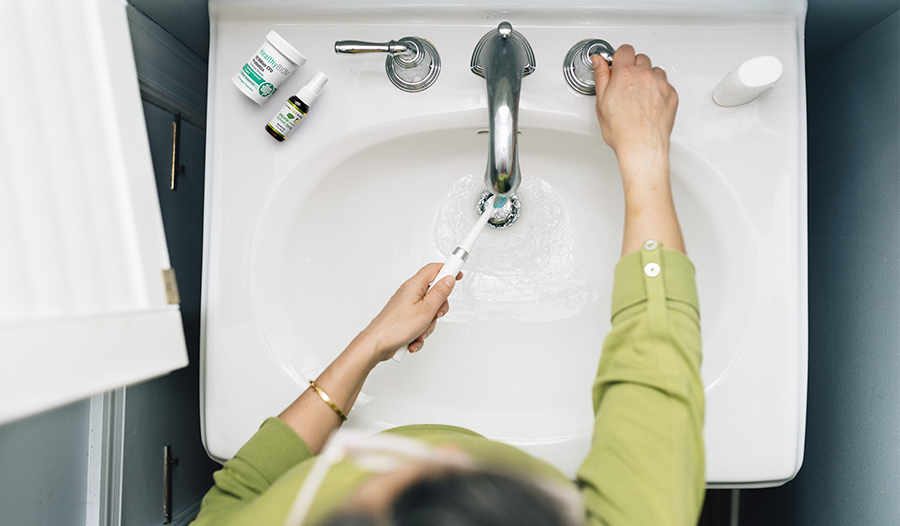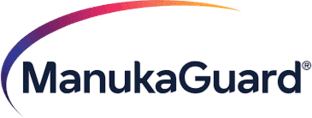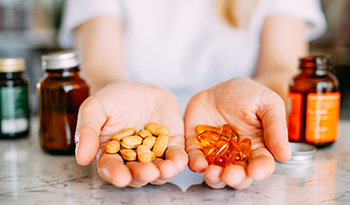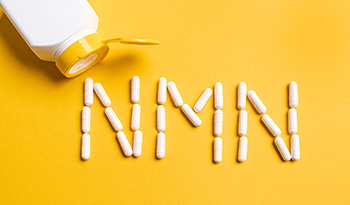8 Tips for Keeping Your Teeth Clean Naturally

It’s National Dental Hygiene month! I always love reading about the newest advances in oral health care that get published during this time of year. In this article, we’ll talk about eight important tips for keeping your mouth healthy from the inside out.
How Are Dental Health and Whole Body Health Related?
Our mouths have their own ecosystems with unique microbiomes—collections of bacteria that help us to digest sugars, absorb nutrients, and keep our mouths clean. Our mouths can also harbor bacteria that aren’t so helpful—pathogenic bacteria that can cause dental caries, lesions, and cavities and contribute to systemic inflammation that puts our cardiovascular, immune, musculoskeletal, and other systems at risk. (Have you ever heard that dental disease is linked with rheumatoid arthritis? It’s true! Check out the resources below to learn more).
The microbial community in our mouth is determined by the foods we eat, the water we drink, the medications we use, and the health of our immune systems. Additionally, the health of our teeth and gums directly impacts our ability to digest and absorb nutrients and keep out infections. For example, if you can’t chew food adequately enough to extract nutrients because your mouth is in pain or you have damaged or infected teeth, this will eventually lead to malnutrition long-term.
So, anyone who’s interested in whole-person health has to care about their mouth. Here are some strategies to keep your mouth healthy so that it can keep the rest of you in tip-top shape.
1. Brush Your Whole Mouth, Frequently
Dentists and doctors alike recommend brushing your mouth frequently—at least twice a day—to remove debris that can feed sugar to bad bacteria and lead to periodontal disease. Ideally, you’d brush after meals (breakfast and your last meal of the day), to give yourself the best chance of removing food debris before it can sit for long periods of time against your teeth and gums. This is because the mechanical removal of plaque, food products, and bacteria is one of the best defenses we have against cavities and periodontal disease.
I advise my clients to brush after each and every meal if they can. To accomplish this, many folks keep a spare toothbrush, travel toothpaste, and floss container at work, and head to the bathroom for a quick brush at the end of their lunch break. Even a quick brush is better than nothing! If all you have time for is mouthwash, try to choose one that contains antimicrobial herbs or alcohol so you can reduce the number of bacteria in your mouth until the next time you brush. Keep these mouthwashes away from kids as they can cause health issues if ingested by little ones accidentally.
For your at-work non-electric and travel toothbrushes, try to choose products that are made with sustainable ingredients. This includes bamboo toothbrushes, toothbrushes made of recycled materials, and natural floss. What’s good for the planet is good for all of us.
2. Use the Correct Technique for Cleaning and Brushing Your Mouth
I say “brush your whole mouth” and not just “brush your teeth” because messaging is important here. Bacteria can live everywhere in the mouth, so we have to brush everywhere! To truly get the most out of your brushing routine, you must gently and regularly brush all of these areas if you truly want to clean your mouth:
- Gums on both the front and back sides of your teeth
- The space between gums and lips
- The inside of your lips
- The roof of your mouth
- Under your tongue
- The sides and top of your tongue
- The front of your teeth
- The back of your teeth
- The top of your teeth
This entire process takes at least two minutes if you do it correctly. Play your favorite music while you brush if that’s what it takes, but make sure you’re taking the time it requires to make each brushing session count.
Holding your toothbrush at a 45-degree angle is the best way to scrape plaque off of teeth and gums. Watch some videos on YouTube if you need help visualizing this!
3. Toothpaste: Leave It On Your Teeth
Did you know that one of the main purposes of toothpaste is to remineralize your teeth? Our teeth are bones. They have a mineral matrix/center that keeps them strong, healthy, and resistant to damage and cavities. To keep teeth strong as we age, we need to provide them with lots of minerals through our diet, fluids, and toothpaste. Toothpaste that is fortified with minerals is part of this solution.
Toothpaste can’t work to its fullest capacity unless you leave the toothpaste on your teeth after brushing. This surprises most people. Aren’t we supposed to swish and spit? Yes, it’s true, you shouldn’t leave a bunch of saliva and toothpaste in your mouth after you brush, but you should also leave some toothpaste behind to keep fortifying your teeth with minerals after you brush. To allow the toothpaste to truly work for you, try this “tooth mask” technique at night a few times per week:
Nighttime Mineral Tooth Mask Technique
- Floss and/or Waterpik as normal.
- Swish some pre-brush mouthwash that contains alcohol or antimicrobial herbs. Spit.
- Brush normally with a good amount of your regular bedtime toothpaste. Spit.
- Rinse with an after-brush mouthwash that contains enamel-strengthening minerals. Spit.
- Apply mineral-rich toothpaste to your brush. Quickly coat all sides of all teeth in your mouth with a thin film of this toothpaste and use the brush to “massage” the toothpaste onto your teeth. This process should only take about 15 seconds.
- Head to bed and try to avoid drinking fluids after this routine.
I recommend doing this special tooth-coating routine a few times a week or daily before bed.
For the mineral toothpaste that you’ll use for the tooth-mask itself, try to choose a toothpaste that isn’t colored or flavored, and that’s made with natural ingredients, including calcium. I recommend one that also has fluoride, which is a mineral that helps to strengthen teeth. If you have sensitive teeth, choose to coat your teeth with a sensitive-teeth toothpaste before bed to help to reduce the sensitivity of your teeth over time.
4. Stay Hydrated
Saliva is an important part of our mouth’s immune system, and saliva is made from the fluid we drink. If you’re dehydrated, your mouth can become dry and saliva can’t reach all of your teeth and gums. This allows bacteria to proliferate and cause damage. The most extreme examples of this are in people who have xerostomia or autoimmune disorders that destroy salivary glands. These folks require special treatment for their mouths to prevent tooth decay and gum diseases.
I advise all of my clients—even those without gum disease—to stay hydrated and to keep their saliva flowing by choosing sugar-free drinks like unsweetened teas, decaf coffees, mineral and seltzer waters during the day. If you need to set an alarm on your phone to remind you to drink, do it. Your teeth and gums will really thank you!
5. Chew Gum to Help Your Teeth
Chewing gum with xylitol can actually help to reduce the number of harmful bacteria in the mouth by tricking them into digesting a sugar that they can’t actually use to help them grow. Over time, chewing xylitol gum has been shown to reduce the number of cavities that people experience. Try swapping your normal gum for xylitol gum between brushes. One tip: don’t chew more than a piece or two of this gum per day. Ingesting lots of xylitol can upset your stomach and lead to diarrhea if you consume too much.
6. Minimize High-Sugar Foods
The bacteria in our mouths that cause the most issues for human health happen to love sugar. If you eat lots of candy, ice cream, cakes, and pastries, this may be working against your long-term oral health goals. If you don’t want bad bugs to hang around, don’t feed them their favorite foods. Choose natural and healthy options that use sweeteners like stevia or xylitol, or opt for more savory snacks when the hunger strikes.
7. Take Probiotics for Oral Health
The gut microbiome starts in the mouth, and probiotics are thought to improve oral health by inhibiting the growth of pathogenic bacterial colonies near teeth and gums. To take advantage of this new research, swish with a probiotic powder several times a week before swallowing it and see if it helps to improve your oral health over time. If probiotics bother your belly, you can simply swish and spit with probiotics and it should still help. Don’t do this if you have open wounds in your mouth and—as always—ask your doctor before making this a part of your routine.
8. Get Routine Care
Dentists and dental hygienists are vital members of your whole health family! Choose a practice you love and visit them twice a year at least for your regular cleanings and screenings to prevent health issues. If your dentist recommends surgery or a procedure to prevent small tooth/gum problems from becoming big problems, take their advice and get these procedures done early, while they’re still manageable. If you haven’t been to the dentist in a while, make an appointment and be prepared that you may have some clean-up work to do before you can get back to a regular schedule of routine care. Dentists and dental hygienists can clean where you can’t reach, use tools to help fix problems before they’re noticeable in the mirror, and stay ahead of your dental health so you never have a dental issue that impacts the rest of your health.
With these tips, you can keep your mouth healthy and help the rest of your body thrive as well. That’s something to smile about!
References:
- Cocco, Fabio, et al. “The Caries Preventive Effect of 1-Year Use of Low-Dose Xylitol Chewing Gum. A Randomized Placebo-Controlled Clinical Trial in High-Caries-Risk Adults.” Clinical Oral Investigations, vol. 21, no. 9, 16 Mar. 2017, pp. 2733–2740, www.ncbi.nlm.nih.gov/pmc/articles/PMC5693987/, 10.1007/s00784-017-2075-5. Accessed 25 Sept. 2021.
- “Proper Angle for Brushing Teeth.” Alberta.ca, 2019, myhealth.alberta.ca/Health/pages/conditions.aspx?hwid=zm2559#:~:text=Place%20the%20toothbrush%20at%20a,Do%20not%20scrub.. Accessed 25 Sept. 2021.
- Seminario-Amez, M, et al. “Probiotics and Oral Health: A Systematic Review.” Medicina Oral Patología Oral Y Cirugia Bucal, 2017, www.ncbi.nlm.nih.gov/pmc/articles/PMC5432076/, 10.4317/medoral.21494. Accessed 25 Sept. 2021.
- “Oral and Systemic Health.” Uptodate.com, 2021, www.uptodate.com/contents/oral-and-systemic-health?search=dental%20health&source=search_result&selectedTitle=2~150&usage_type=default&display_rank=2. Accessed 25 Sept. 2021.
DISCLAIMER:This Wellness Hub does not intend to provide diagnosis...













































































 Table of Contents
Table of Contents















